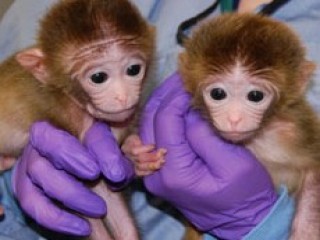Science and Technology

 Fierce and Fearless: Greta Gerwig's 'Barbie' Claims Title of Highest-Grossing Female-Directed Film
Fierce and Fearless: Greta Gerwig's 'Barbie' Claims Title of Highest-Grossing Female-Directed Film
added on Monday 24th July 2023

American scientist revealed world's first genetically engineered monkeys
American scientists have produced the world's first chimeric monkeys, developed from stem cells harvested from separate embryos. They contain genetic material from as many as six genomes. The infant rhesus monkeys are totally healthy and could hold great promise for future stem cell research in primates, researchers say. They also carry an interesting and controversial message for future stem cell research: Those cultured stem cell lines in labs throughout this country, such a crucial scientific tool and such a cultural flashpoint, may not be as potent as the ones inside embryos.
The monkeys, named Roku, Hex and Chimero, were born at the Oregon National Primate Research Center at Oregon Health & Science University. They’re the result of mashups made from separate rhesus monkey embryos. Researchers took very early stem cells, called totipotent stem cells, from separate developing embryos and basically glued them together, implanting the mixed embryos into surrogate mother monkeys. The cells — from totally different sources — didn't fuse, but worked together in harmony, forming fully fledged, normal, healthy animals.
This has implications for ongoing stem cell research. This research suggests that existing embryonic stem cell lines, some of which are two decades old, might not be as potent as the stem cells found inside new embryos.
OHSU recorded a video with Roku and Hex, but not with Chimero, which was born after the two and never got the cahnce to film him. Take a look below at the video.
 Fierce and Fearless: Greta Gerwig's 'Barbie' Claims Title of Highest-Grossing Female-Directed Film
Fierce and Fearless: Greta Gerwig's 'Barbie' Claims Title of Highest-Grossing Female-Directed Filmadded on Monday 24th July 2023













